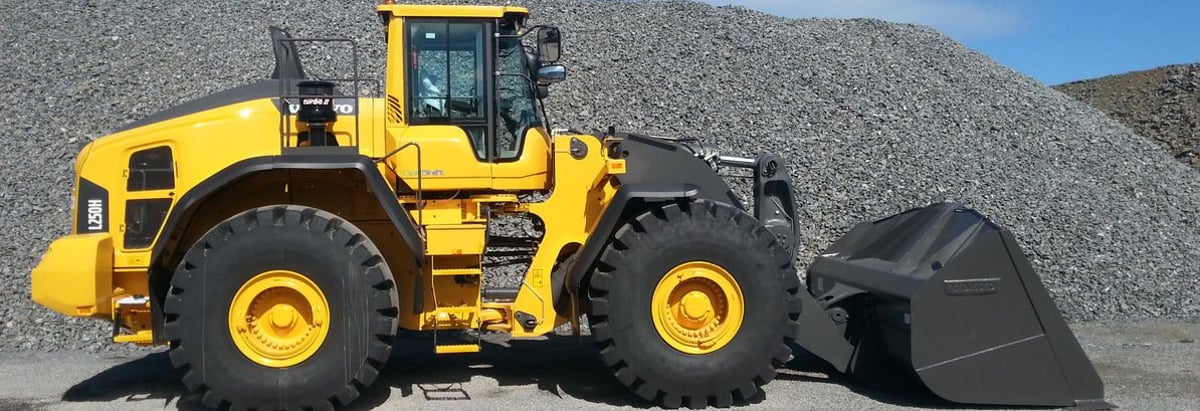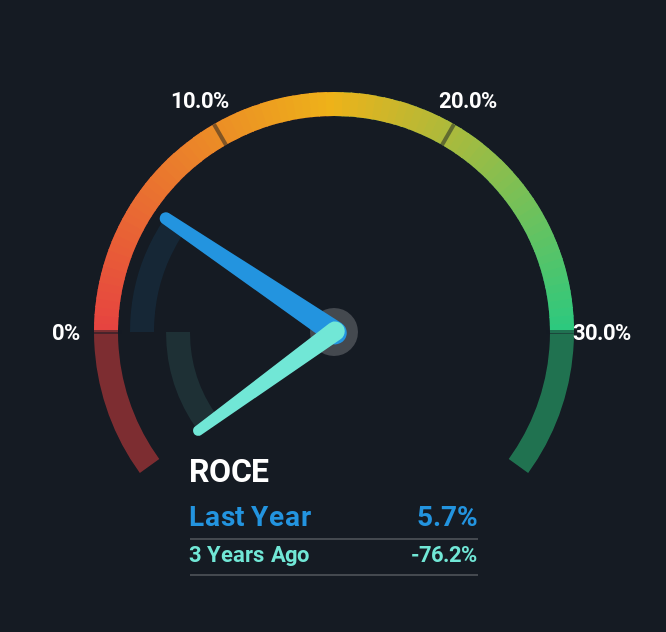- South Korea
- /
- Machinery
- /
- KOSE:A042660
Hanwha Ocean (KRX:042660) Has More To Do To Multiply In Value Going Forward

There are a few key trends to look for if we want to identify the next multi-bagger. One common approach is to try and find a company with returns on capital employed (ROCE) that are increasing, in conjunction with a growing amount of capital employed. Basically this means that a company has profitable initiatives that it can continue to reinvest in, which is a trait of a compounding machine. However, after briefly looking over the numbers, we don't think Hanwha Ocean (KRX:042660) has the makings of a multi-bagger going forward, but let's have a look at why that may be.
Return On Capital Employed (ROCE): What Is It?
If you haven't worked with ROCE before, it measures the 'return' (pre-tax profit) a company generates from capital employed in its business. Analysts use this formula to calculate it for Hanwha Ocean:
Return on Capital Employed = Earnings Before Interest and Tax (EBIT) ÷ (Total Assets - Current Liabilities)
0.057 = ₩444b ÷ (₩18t - ₩10t) (Based on the trailing twelve months to March 2025).
Therefore, Hanwha Ocean has an ROCE of 5.7%. Even though it's in line with the industry average of 6.5%, it's still a low return by itself.
View our latest analysis for Hanwha Ocean

Above you can see how the current ROCE for Hanwha Ocean compares to its prior returns on capital, but there's only so much you can tell from the past. If you'd like, you can check out the forecasts from the analysts covering Hanwha Ocean for free.
How Are Returns Trending?
Things have been pretty stable at Hanwha Ocean, with its capital employed and returns on that capital staying somewhat the same for the last five years. This tells us the company isn't reinvesting in itself, so it's plausible that it's past the growth phase. With that in mind, unless investment picks up again in the future, we wouldn't expect Hanwha Ocean to be a multi-bagger going forward.
On another note, while the change in ROCE trend might not scream for attention, it's interesting that the current liabilities have actually gone up over the last five years. This is intriguing because if current liabilities hadn't increased to 57% of total assets, this reported ROCE would probably be less than5.7% because total capital employed would be higher.The 5.7% ROCE could be even lower if current liabilities weren't 57% of total assets, because the the formula would show a larger base of total capital employed. So with current liabilities at such high levels, this effectively means the likes of suppliers or short-term creditors are funding a meaningful part of the business, which in some instances can bring some risks.
The Key Takeaway
We can conclude that in regards to Hanwha Ocean's returns on capital employed and the trends, there isn't much change to report on. Investors must think there's better things to come because the stock has knocked it out of the park, delivering a 281% gain to shareholders who have held over the last five years. However, unless these underlying trends turn more positive, we wouldn't get our hopes up too high.
If you'd like to know about the risks facing Hanwha Ocean, we've discovered 2 warning signs that you should be aware of.
While Hanwha Ocean may not currently earn the highest returns, we've compiled a list of companies that currently earn more than 25% return on equity. Check out this free list here.
Valuation is complex, but we're here to simplify it.
Discover if Hanwha Ocean might be undervalued or overvalued with our detailed analysis, featuring fair value estimates, potential risks, dividends, insider trades, and its financial condition.
Access Free AnalysisHave feedback on this article? Concerned about the content? Get in touch with us directly. Alternatively, email editorial-team (at) simplywallst.com.
This article by Simply Wall St is general in nature. We provide commentary based on historical data and analyst forecasts only using an unbiased methodology and our articles are not intended to be financial advice. It does not constitute a recommendation to buy or sell any stock, and does not take account of your objectives, or your financial situation. We aim to bring you long-term focused analysis driven by fundamental data. Note that our analysis may not factor in the latest price-sensitive company announcements or qualitative material. Simply Wall St has no position in any stocks mentioned.
About KOSE:A042660
Hanwha Ocean
Operates as a shipbuilding and offshore contractor in South Korea and internationally.
Proven track record with moderate growth potential.
Similar Companies
Market Insights
Community Narratives





